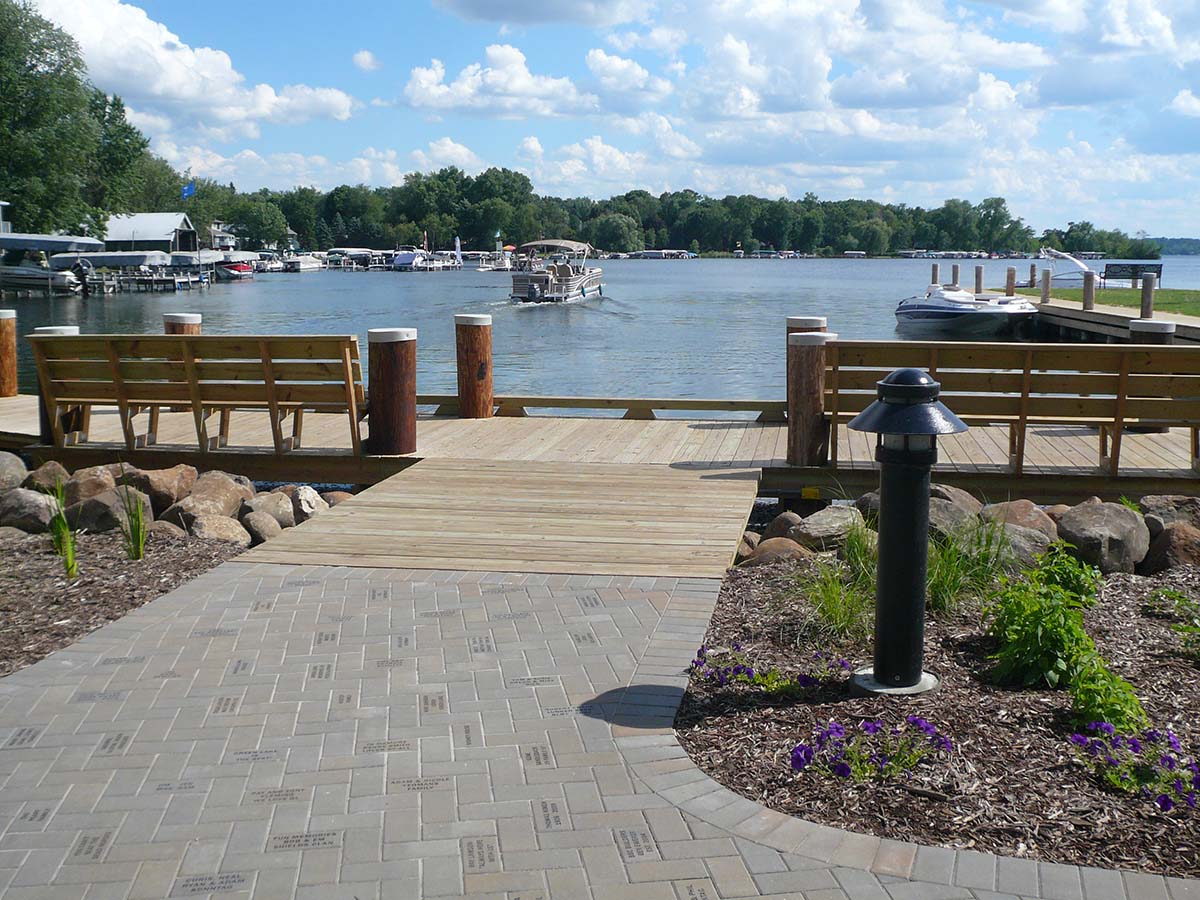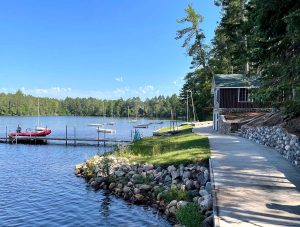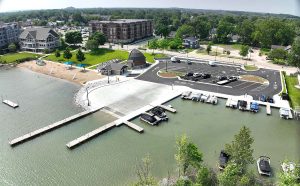
Understanding the Marina Permitting Process
Published on August 14, 2025When it comes to marina development, timing is everything. Whether a marina owner is planning a new facility or modifying an existing one, the permitting process can be complex and time-consuming. Marina owners need to be prepared for the magnitude of time, documentation and coordination of permits and approvals needed to move a project forward in the federal, state and local arenas. Building relationships with regulatory teams early in the planning process, preparing background information, communicating consistently and understanding the permitting timeline are all critical components of the process. Taking a proactive approach to each of these stepping stones will enable smooth coordination, faster approvals and a better chance of keeping a project on schedule — and getting marina docks in the water before boating season arrives.
Understanding the Regulatory Landscape
Once a marina concept is on paper, the real work begins in navigating the permitting maze. At the center of the process on a federal level is the U.S. Army Corps of Engineers (USACE). USACE is ultimately responsible for protecting and regulating construction associated with the navigable waters of the United States. If planning to build, dredge or place fill in any U.S. navigable waters or wetlands, a permit from the USACE must be obtained before breaking ground. Starting conversations early is not just smart, it’s essential. It’s also unlawful to begin any work before doing so.
Two of the primary permits administered through the USACE include Section 404 of the Clean Water Act and Section 10 of the Rivers and Harbors Act of 1899. Section 404 regulates dredging or fill in the navigable waters of the U.S., and Section 10 requires authorization from the Secretary of the Army, acting through the Corps of Engineers, for the construction of any structure in or over any navigable water of the United States.
As of 2025, the USACE has revised most of its nationwide permits (NWPs), which are commonly used for marina-related activities. These changes may affect thresholds for impacts, pre-construction notification requirements and conditions for activities like dredging and dock construction. Reviewing the latest NWP guidance early in the planning process will help to determine eligibility and avoid costly delays.
In addition, wetland delineation standards have also been updated. New tools and data sheets released by USACE to improve accuracy and a revised “continuous surface connection” rule affect how adjacent wetlands are defined under federal jurisdiction. These changes may influence whether a project falls under the federal permitting authority — another reason to engage early and often with permitting teams.

Beyond the federal requirements, there are agencies within each state that play major roles in the permitting processes. The most common state agencies to coordinate with are the Department of Natural Resources (DNR) or the Department of Environmental Quality (DEQ). These agencies control the state permitting process and often work closely with the USACE to review and approve project plans. They may also require their own environmental reviews. While approval from the state agencies is a strong indicator of federal alignment, it is not a guarantee. In some states, the USACE leads the process entirely. Because the overarching goal of the state DNR/DEQ is to conserve, manage and protect natural resources, expect a rigorous review focused on protecting natural resources and stewardship of the environment.
At the local level, marinas should expect to comply with the zoning ordinances, building codes and utility standards of their own municipality. Additionally, local soil conservation districts may need to be consulted for approval of site grading or sediment control plans, and local fire departments may need to be involved for the approval of fire suppression, emergency access or safety plans. Oftentimes, these plans must first be approved by the municipal board or local fire chief before advancing to the state level.
Other agencies that may also be stakeholders in the permitting process include the U.S. Fish and Wildlife Service, Environmental Protection Agency (EPA), U.S. Coast Guard, the Federal Emergency Management Agency (FEMA), state health departments and boards of public works, to name a few. Notably, the EPA and the USACE have issued a Joint Guidance on Waters of the United States (WOTUS), which may affect jurisdictional determinations for marina sites.
All these permitting and approval steps take time, so early coordination at all levels is key to keeping your project on schedule.
Engage Early and Build Relationships
After identifying all the potential permitting agencies involved, it is time to begin relationship building. This stage of the process should begin at the design concept stage, as soon as there is a clear vision of size, features and potential impacts on the surrounding water body. Waiting until the plans are polished and final will result in lost time and delayed schedules.
Scheduling an early pre-application meeting will help the marina representative understand the required investigations and documentation to be supplied with the applications. These early engagements will identify potential red flags and warning signs, providing time to adapt and respond before issues become roadblocks. Waiting too long can be detrimental to construction timelines, construction costs and marina operations.

As of 2025, the permitting process has become more streamlined. Information at the federal level can be reviewed online via the Regulatory Request System (RRS). The RRS platform is a centralized online portal for submitting applications, tracking progress and communicating with regulators. That said, it still doesn’t replace the need to make personal connections. Building a rapport with the assigned agency representative can make a world of difference. These individuals are not just gatekeepers; they can be allies. Keeping them informed of a project’s progress, changes and challenges from conception to construction helps them advocate for your timeline and guide you through the process. The more your representative understands your goals, the better they can help you navigate the regulations.
At the local level, early coordination is just as important. Municipal codes, utility standards and fire safety regulations all come into play. For example, electrical systems must be designed and stamped by a licensed electrical engineer, with strict adherence to code. Overlooking even a minor detail can lead to serious safety risks such as electrical shock, the leading cause of fatalities at marinas nationwide.
The reality is that permitting is a complex, multi-layered process. Marina plans will pass through a long chain of reviews, and each step takes time. With boating season always looming, marina owners already have their hands full. That is why bringing in a consultant or a funding expert can be a smart move. These professionals consistently work within the regulatory channels and have knowledge of the required paperwork — and can help keep a project on course.
Timelines and Takeaways
For many projects, a 90- to 120-day turnaround from permit submi

ssion to permit approval is still achievable, if a project is well prepared and relatively straightforward. Larger, more complex projects are likely to extend six to 18 months or beyond, especially those requiring public review or environmental assessments. However, under a 2025 federal directive to streamline NEPA reviews, some projects may benefit from shorter environmental review timelines — although thorough preparation is still essential.
Timelines vary widely from state, region and district — or due to agency workloads. Marinas taking a last-minute reactive approach to project permitting could find themselves facing lengthy and increasingly expensive delays, rising costs and missed seasonal opportunities.
Dan Williams, PLA, ASLA, AHLP, is senior landscape architect at MSA. He can be reached at dwilliams@msa-ps.com. Marcus Rue, PE, is team leader at MSA. He can be reached at mrue@msa-ps.com.
| Categories | |
| Tags |





